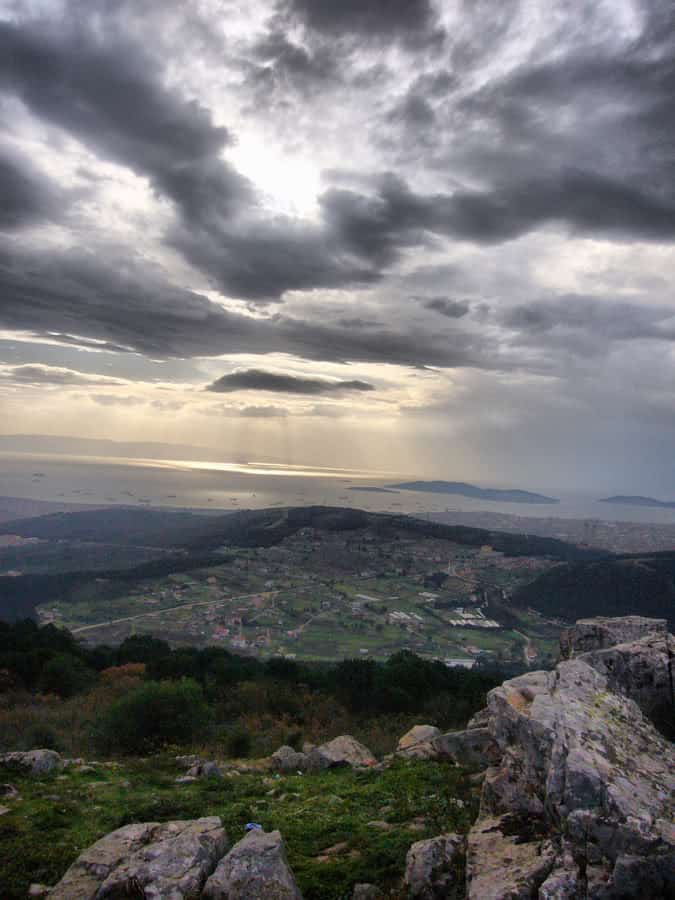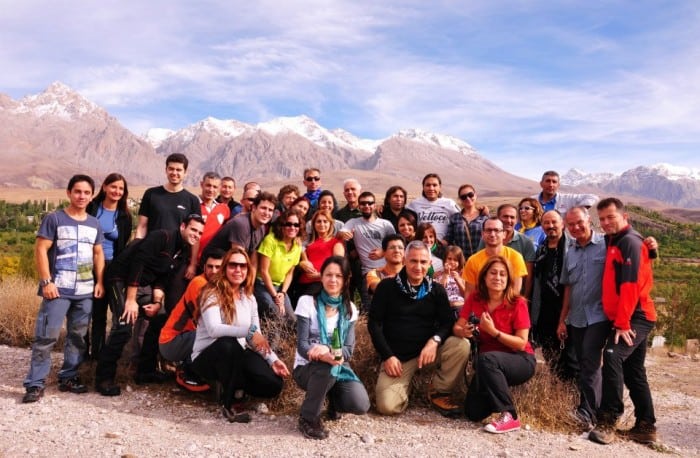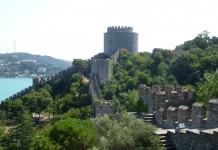
By Gökay Ürk, guest writer for Yabangee
After providing an introduction to Turkish mountaineering history and highlighting some prominent Turkish climbers, let’s take a look at some of the popular trekking and climbing destinations, and the mountaineering clubs that are currently operating in Turkey.
Situated in the Kartal district of Istanbul and only 20 km away from Kadıköy, Aydos is the highest point in Istanbul at 537m and the only place close to the city where one can enjoy a trekking tour. It’s a short commute from the center of Istanbul and trekkers can expect to have a beautiful view of the islands on a clear day.
For those who have no problem with commuting outside the city, Kocaeli offers plenty of trekking routes and is only two and a half hours by car from Istanbul. In particular, Kartepe mountain, which stands at 1606m, is a sublime destination where one can both ski and trek. Although it is classed as a mid-difficulty mountain, it can be quite harsh if you climb in the winter season. For example, I had my first serious trekking experience in the valleys of Kartepe, wherein the mountain tested the limits of my patience and resilience as I endeavored to cover 35 km in 15.5 hours because of an unexpected and intense snowfall.
Ballıkayalar, situated in Kocaeli, is another outstanding destination for trekkers, and especially for rock climbers. There are around 100 rock-climbing routes where most professional climbers had their adrenalin going for the first time here. The only place that compares is Olympos. Situated on the Lycian Way, Olympos is mainly known for its sandy beaches and tree houses. But nowadays it is a distinguished rock climbing destination with approximately 120 routes.
A second alternative would be going down south to Yalova, which is a short hour and a half ferry ride from Istanbul, with ferries operating between Eskihisar and Yalova, Topçular. Furthermore, Yalova’s thermal hot springs, which were built by the Byzantine Emperor, Constantine, only increase the attractiveness of the region.
Located 15 km away from Bursa, Uludağ (2543m) is another mountain welcoming hikers, mountaineers, and skiers all year around with its numerous glacial lakes and trail routes. Although you don’t need to obtain any permits, it is advised to only attempt ascending with the consent of the local gendarmes. Given the possibility of snowstorms, mist, and avalanches, it can be quite perilous if proper safety measures are not taken.
Moving beyond Istanbul toward southern Turkey, the Aladağlar mountain range, which is located in the province of Niğde, provides a bit more of a challenge. And no wonder – this area is considered part of the Taurus Mountains in Turkey, which itself is part of the Alp-Himalayas, the expansive range that encompasses some of the highest mountains in the world, such as Mont Blanc (4808 m) and Mount Everest (8848m). At 3756m, Aladağlar is one of the more difficult mountains in Turkey and requires hikers to be fully prepared for a technical climb. Tunç Fındık has used Aladağlar as a training ground for his challenging climbs abroad since his university days; he even published a book that outlines 50 routes at Aladağlar.
In a major change of scenery, Turkey’s northeast Black Sea region resembles mountainous Central Europe with its evergreen trees, cascading streams, and mountain ranges. It has been “Terra Incognita”, that is declared by UNESCO as the 22nd biosphere reserve in the world. The Kaçkar Mountains, which are located in this region, consist of several ranges with summits of 3000m and 4000m and are surrounded by numerous deep-forested valleys where fine examples of Turkish mountain culture exist. Although ascending these mountains is a non-technical trek, it is advised to use proper gear as the area has a high precipitation and snow rate. The trip can be a good acclimatization for anyone planning to make an ascent to Mount Ararat.

Finally, the highest peak in Turkey at 5137m, Ağrıdağı (Mount Ararat) is a volcanic mountain that bulges out between the cities of Van and Ağrı. It is not a technical climb, but given the intensity of the snow at 4200m, it might be necessary to use crampons. Acclimatization is definitely required, so it is suggested to camp out between 3200m and 4200m in order to adjust to the high altitude. It can be a good training route for the anyone intending to climb higher peaks outside of Turkey. The region is militarily sensitive, so don’t forget to obtain permits from the local authorities.
The emergence of mountaineering clubs in Turkey shows just how popular the sport is becoming. Founded in Izmir and dispersed over the country, Zirve Mountaineering Sports Club is the only club in Turkey that is a member of the International Mountaineering and Climbing Federation. The goal of obtaining international recognition is to create a common ground for foreign and Turkish mountaineers to benefit from each others’ experiences, as well as to increase the number of foreign climbers visiting Turkey. With their “Aladağlar 50x3000m Summit Project”, the club intends to crown the person who successfully ascends the 50 summits of Aladağlar with a special title.
Anadolu Mountaineering Club, located in Istanbul, is taking strong steps to make a name for itself in the mountaineering community. They organize basic and advanced mountaineering seminars to teach the philosophy of mountaineering and to ensure that members climb safely. They also offer family camps, which are a fun way for kids and teenagers to become better acquainted with nature. The club, which contributes to a foundation for children with leukemia, is an active participant in social projects.
Founded in Istanbul in 2009, Istanbul Mountaineering Club is making their name well-known by organizing impressive events. The club recently hosted the legendary mountaineer Reinhold Messner, who talked about his climbing experiences. This was a big step forward for the club and suggests that it is gaining traction in the international climbing community.
Lastly, founded in Istanbul, TREK 5000 is a friendly community that arranges trekking tours at three different distances, 15 km, 20 km, and 25 km, making its activities quite popular among nature lovers. The primary focus of the club, which is quite popular with nature lovers, is mostly based on trekking tours rather than technical climbing.
There are a wide range of mountains in Turkey and a growing number of trekking clubs catering to different audiences, making it a great place for climbers of all levels.










